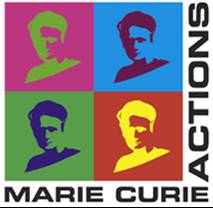

IEF WaterBugModel
All members of the groundwater biotic community, comprising microorganisms, protozoans, and metazoans, potentially contribute to the natural attenuation of organic matter inputs deriving e.g. from contaminations. This is all the more crucial, as an increasing proportion of drinking water is won from groundwater, and therefore natural attenuation is important for public health. In recent years, enhanced in situ bioremediation has been shown to be an important tool for management. However, sampling groundwater is limited compared to other habitats, and therefore, knowledge on the conditions under which microbial colonies, or the protozoans and metazoans grazing on the microbes, function most effectively, is scarce.
For that reason, we will bring together individual-based modellers, groundwater ecologists and hydrogeological modellers to perform simulations based on exemplary conditions in order to evaluate the biodegradation potential based on the complete ecosystem functioning. Such simulations are not only interesting for chemically contaminated sites, but also for sites that are thermally polluted (e.g. from geothermal energy systems or industrial groundwater processing), especially if those are situated in areas where groundwater is taken for drinking water production. Raw water quality for drinking water production may change due to how the functions involved in the natural attenuation are compromised by unusual temperatures.
Groundwater contaminant biodegradation by microbes has so far only been modelled on the population level. These models have to make averaging assumptions which do not represent groundwater heterogeneity adequately. Biotic features, such as the adaptive behaviour that individual microbial cells exhibit by e.g. switching their physiological reactions during the life cycle and due to changing environmental conditions, have also not been taken into account. For other communities and other environments, such behavioural adaptations have successfully been modelled using the bottom up approach of individual-based models.
The aim of this project is therefore threefold: 1) to adapt an existing platform for individual based modelling (IbM) of biofilm, iDynoMiCs, to groundwater conditions; 2) to add further levels of the food web and functional types to this platform, e.g. grazers (belonging both to the protozoans and metazoans) and 3) to couple this platform to a groundwater reactive transport model, in order to conduct evaluations of degradation potential and management options based on groundwater ecosystem functions.
Fellow:
Susanne I. Schmidt, Centre of Systems Biology (CSB), Biosciences, University of Birmingham, UK
Supervisors:
Jan-Ulrich Kreft, Centre of Systems Biology (CSB), Biosciences, University of Birmingham, UK
Rae Mackay, Geography and Environmental Sciences (GEES ),University of Birmingham, UK
Associated Partners:
Olaf Kolditz, Department of Environmental Informatics, UFZ Leipzig, Germany
Martin Thullner, Department of Environmental Microbiology, UFZ Leipzig, Germany